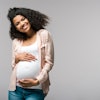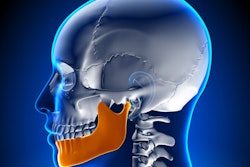
Photodynamic therapy (PDT) may be an effective option for treating oral lesions in patients diagnosed with COVID-19, according to a letter to the editor published on January 8 in Photodiagnosis and Photodynamic Therapy.
The therapy's antiviral potential and its ability to weaken an organism indirectly by stimulating the immune system may make photodynamic therapy a very effective treatment for COVID-19 oral lesions, according to the authors.
"We believe that due to the antiviral, immunostimulatory, and immunosuppressive effects of PDT, it can be used not only in symptomatic patients to relieve pain but also in asymptomatic patients' oral cavity, periodontal pockets, and saliva to control the outbreak and avoid oral contact infection," wrote the group, led by Betsy Joseph, PhD, of the periodontics department at Saveetha Dental College and Hospitals, Saveetha University, in Chennai, India.
COVID-19 and the mouth
Dental health has taken a hit during the pandemic. Numerous oral manifestations, including tongue and mouth ulcers, fissured tongues, halitosis, and lip necrosis, have been linked to SARS-CoV-2. Unfortunately, many of the medications used to treat the oral manifestations in COVID-19 patients are expensive and can increase the development of resistance. Therefore, a new way to prevent and treat oral lesions in these patients is necessary.
This type of phototherapy involves light and photosensitizing chemical substances that, along with molecular oxygen, evoke cell death. Photodynamic therapy has grown in popularity for its use in treating acne, and it can kill microbes such as bacteria, fungi, and viruses. Recent evidence indicates PDT has antiviral potential when used with the organic chloride salt methylene blue and the chlorine-derivative photosensitizer radachlorin to inactivate and inhibit SARS-CoV-2 in vitro. Therefore, the authors hypothesized it may be a good way to treat oral lesions in patients with COVID-19.
Photodynamic therapy has been shown to fight secondary infections in COVID-19 patients, and it may also work as a complementary treatment for decreasing viral load in saliva and the mouth. PDT likely treats oral vesicular lesions and ulcers after porphyrin-based photosynthesizers are applied to them, according to the authors. Photosynthesizer molecules may additionally lure SARS-CoV-2 virions away from healthy oral tissue, with the virions attaching to the photosynthesizer molecules instead, they wrote.
In vitro results showed that very low concentrations -- about 100 to 1,000 times lower than usual -- of methylene blue and radachlorin when activated by 662-nm light inhibited SARS-CoV-2. Studies also have shown that methylene blue inhibits the SARS-CoV-2 spike protein and its angiotensin-converting enzyme 2 (ACE2) receptor, which is vital to inactivating the virus, according to the authors.
Despite the promising evidence, no strong studies currently show that PDT can inactivate SARS-CoV-2 in the oral cavity in vivo. Therefore, clinical trials using the therapy in the oral cavity should be conducted to evaluate its efficacy against the novel coronavirus, the group noted.
"PDT is a potential antiviral tool that could prove a highly effective method of preventing and treating COVID-19," the authors wrote.




















